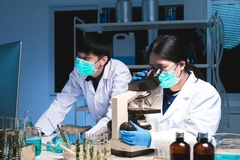A tide of economic opportunity? Seaweed extract may hold potential for skin and healthy aging
05 Sep 2022 --- A genus of macroalgae may hold the potential to prevent and improve skin aging, while also offering anti-inflammatory properties. The findings by the National Research Foundation of Korea could see the Sargassum spp. extract used in the healthy aging space for its nutraceutical properties.
Approximately 200 biologically active compounds in Sargassum spp. have been discovered, including but not limited to meroterpenoids, terpenoids, flavonoids, sulfated polysaccharides, polyphenols, pheophytin, fucoidans, phlorotannins, glycolipids and sterols.
Sargassum spp. is known to have a wide range of bioactive metabolites with potential applications in the biofuel, nutraceutical, pharmaceutical and cosmetic industries.
“Researching alternatives to increase the value of Sargassum biomass reaching the coasts could not only render Sargassum tides an economic opportunity but also solve their related environmental problems,” underline the researchers.

 Various extracts from Sargassum showed beneficial effects for moisturization and skin barrier repair.
Various extracts from Sargassum showed beneficial effects for moisturization and skin barrier repair.
From sea to industry
The active compounds exhibit various biological benefits such as anti-inflammatory, antifungal, antiviral, antibacterial, antioxidant, anti-melanogenesis, anti-metabolic syndrome, neuroprotective and anti-bone loss effects.
Sargassum, a genus of brown algae in the Sargassaceae family, is a seaweed commonly found in tropical and subtropical coastal areas, with more than 400 species distributed in almost all marine basins. The seaweed is rich in carbohydrates, proteins, amino acids, vitamins, minerals, dietary fiber and carotenoids.
The study reviewed previous research to determine the potential effects of Sargassum spp. on the prevention and improvement of skin aging and their underlying molecular mechanisms.
The main Sargassum spp. include S. horneri, S. fusiforme, S. muticum, S. pallidum, S. siliquastrum, S.thunbergii, S. fulvellum, S. polycystum and E. stolonifera and have long been consumed as food or traditional medicine in many countries to prevent or treat a variety of diseases.
Antioxidant and photoprotective features
Examination of photoprotective effects of ethyl acetate fraction of S. muticum against UVB radiation-induced skin damage and photoaging in hairless-1 mice and human keratinocytes revealed positive results.
A study of the effects of S. cristafolium extract on UVA-induced skin damage in mice showed S. cristafolium extract exerts photoprotective efficacy by modulating anti-inflammatory and pro-inflammatory cytokines.
An investigation of the photoprotective properties of the fucoidan fraction of S. siliquastrum (SSQC) against UVB-stimulated skin damage using human keratinocytes showed that SSQC4 had the lowest molecular weight among the fucoidan fractions of S. siliquastrum. obtained by step gradient ethanol precipitation and had the best bioactive effects.
Fucoidans are sulfated polysaccharides found in the cell walls of brown algae and are known to exhibit various biological activities.
UVB-protective properties were also found in S. fusiforme, S. confusum and S. coreanum. Several studies have also demonstrated that S. horneri extracts and derived compounds are beneficial in inhibiting UVA- and UVB-induced oxidative stress and photoaging.
Biofunctions for anti-inflammation Sargassum spp. is known to have a wide range of bioactive metabolites with potential applications in the biofuel, nutraceutical, pharmaceutical and cosmetic industries.
Sargassum spp. is known to have a wide range of bioactive metabolites with potential applications in the biofuel, nutraceutical, pharmaceutical and cosmetic industries.
Inflammatory responses induced by UV exposure, a causative factor in skin aging and skin cancer, were studied to reveal the anti-inflammatory effects of Sargassum spp. extract. The types of Sargassum studied include S. fulvellum, S. horneri, M. myagroides, E. stolonifera, S. macrocarpum, S. fusiforme, S. micracanthum and S. binderi.
The skin barrier primarily protects the body against physical and chemical injury and prevents the loss of body water and other substances. Skin dryness results in observable changes, including redness, flakes, dry white patches, a lack of luster surface, cracks and even fissures.
Moisturization and skin barrier repair are the primary indicators to evaluate skin health.
Recent research exhibited that various extracts from Sargassum – S. muticum, S. vachellianum, S. horneri, S. confusum, S. glaucescens and S. fusiforme – showed beneficial effects for moisturization and skin barrier repair.
Melanin protects the skin from UV-induced skin damage. However, excessive accumulation of melanin can induce hyperpigmentation such as freckles, moles, and lentigo and even lead to malignant melanoma.
Previous studies reported the potential anti-melanogenesis ability needed to treat pigmentation and pigmentation disorders in S. polycystum, S. serratifolium, S. thunbergia, S. fusiforme and S. siliquastrum.
Edited by Radhika Sikaria















